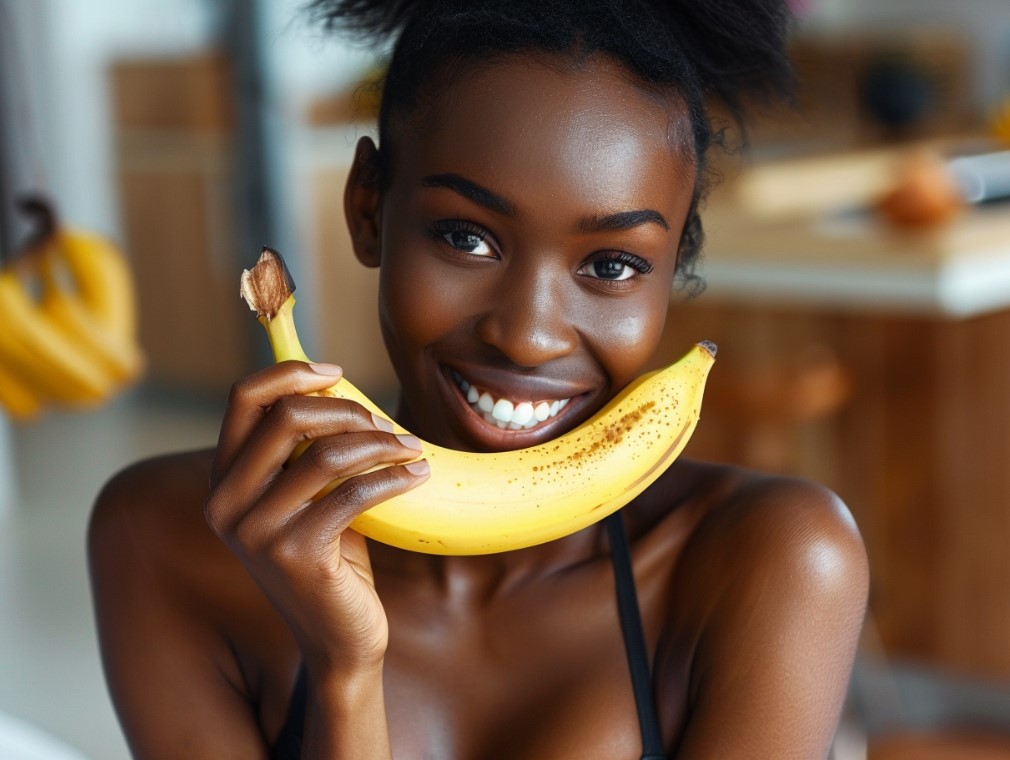The high carbohydrate content can lead to bloating and discomfort, disrupting sleep and leading to a restless night. Moreover, the fermentation process used to produce garri can cause acidity and indigestion if the stomach is not given ample time to process it before lying down.Beans and Akara (Bean Cakes) Beans are a great source of protein and fiber, but they can be problematic when eaten before bed. The high fiber content, while beneficial during the day, can cause gas and bloating when consumed at night. This is due to the complex carbohydrates in beans that require longer digestion time, leading to fermentation in the gut. Akara, or bean cakes, are deep- fried and, thus, not only share the gas- inducing properties of beans but also add the complexity of fried foods, which are notorious for causing heartburn and indigestion. Suya (Spicy Grilled Meat) Pounded Yam Pounded yam is a beloved Nigerian dish often paired with rich, savory soups.
However, it is extremely dense and can be tough on the digestive system when eaten late in the evening. The high carbohydrate content means the body has to work harder to break it down, potentially leading to feelings of fullness, bloating, and even constipation. Additionally, the heaviness of pounded yam can prevent the body from entering a restful state, as it is preoccupied with the laborious digestion process.The Importance of Timing and Moderation The foods mentioned above are not inherently harmful and can be part of a balanced diet if consumed at appropriate times. The key to maintaining a healthy digestive system is moderation and timing. Eating heavy, spicy, or fried foods late at night places undue stress on the digestive system, which can result in discomfort and disrupted sleep patterns. To promote better digestive health, consider lighter alternatives in the evenings. Foods like fruits, vegetables, and lean proteins are easier to digest and less likely to cause issues like bloating or heartburn. Additionally, giving your body at least two to three hours to digest before lying down can significantly improve your sleep quality and digestive health.In summary, while Nigerian cuisine is rich and diverse, it is essential to be mindful of what and when you eat, especially before bed. Avoiding heavy, spicy, and fried foods such as Eba, Beans and Akara, Suya, and Pounded Yam before bedtime can prevent digestive discomfort and promote a better night’ s sleep. By making conscious food choices and allowing adequate digestion time, you can enjoy the flavors of Nigerian cuisine without compromising your digestive health.
A growing trend among women is the switch from clothes, sanitary pads and tampons to menstrual cups. While it offers numerous benefits, DAILY POST’s Gift Oba in this report brings to light the hidden facts and its potential implications for women’s health and environmental sustainability. Over the years, women have had limited options to manage their menstrual flow, with many of them using thick cloth materials and sanitary pads as their go-to solutions. However, with technological advancements and innovative ideas, the world of menstrual management has undergone a revolution. Today, there’s a new kid on the block that’s taking the world by storm- the menstrual cup! To some, this innovative and sustainable solution is a complete game-changer, providing women with a more cost-effective and eco-friendly alternative that’s reusable for years on end. Unlike traditional pads and tampons, menstrual cups are reusable so there is no need to worry about disposal or frequent purchases.Screenshot
What is a menstrual cup? Menstrual cups are a small, flexible funnel-shaped cup made of medical-grade silicone that is inserted into the vagina to catch and collect period fluid. They come in various sizes to fit every anatomy making them more sustainable and convenient for women. DAILY POST gathered that the cups which cost N5,000 (per cup) have several brands like the Anytime Menstrual Cup, Keeper Cup, Moon Cup, DivaCup, Lena Cup, and Lily Cup. There are also disposable menstrual cups available like the Instead Softcup. According to research, these cups are reusable, budget-friendly, reduces the risk of getting Toxic Shock Syndrome (TSS), a rare bacterial infection associated with tampon use, holds more blood and can be used with an IUD (an intrauterine device- a form of birth control that is inserted into the uterus). An anonymous source while sharing her experience said “I’ve been using menstrual cups for some years now and I have no leaks throughout the day. I bleed light to medium so I can go a whole day without cleaning it out. “The container it comes with is very convenient as well. Although I still leak after I’ve laid down for a while, but I’ve always had that issue so it might just be my personal problem,”
They can be used for up to 10 years – Menstrual Cup Advocate Speaking to DAILY POST, Tojah Omorogbe, a menstrual cup advocate and vendor explained that the medical grade silicone cup (meaning it has been tested medically to be suitable inside the body) can be used for up to 10 years. She maintained that while there are no age limits as to who can use the cup, certain guidelines must be followed for safety. “I teach all women I introduce to menstrual cups these guidelines and it’s up to them to use it safely. “A cup can last at least 5 years, maximum 10 years, no age limits as long as no underlying health issue. “The simple guideline is to sterilize before use for the month, wash with mild soap and clean water then insert and place the cup properly. Then wash hands before and after handling the menstrual cup,” she advised. How to use “Grease your hand with water or water-based lubricant then fold to insert inside the vagina. “It is folded to make it smaller and then it is inserted into the vagina. While it is inside it will create a seal to prevent leakages, so while the menstrual fluids are coming out from inside the cervix, it will drop into the cup. “The cup will hold it up to 12 hours but that doesn’t mean it applies to everybody, it depends on your flow. And all you need to do is bring out your cup, dispose of the fluid and wash with a mild soap and clean water and then reuse it,” she added. She further advised that when attempting to remove the cup, you are not to pull by the tip, rather you may need to insert your fingers a bit into the vagina, capture the base of the cup and then squeeze and pull out. READ FULL STORY HERE>>>CLICK HERE TO CONTINUE READING>>>
It can weaken vaginal muscles, change ph level if not properly used- While menstrual cups may be an affordable and environmentally friendly option, women still need to consider the potential implications for their health, Omorogbe disclosed.According to her, the cup when not properly inserted can cause changes in ph level, yeast infection and weak vaginal muscles. “There are guidelines that must be followed to avoid changes in ph level, yeast infection and weak vaginal muscles,” she noted. DAILY POST also gathered that while some might find themselves in a place or position that makes it difficult to remove the cup which can lead to spill during the process, others find the insertion and removal of a menstrual cup uncomfortable or even painful.
Young ladies within the age of 19 to 25 are willing to try it- When asked about the turnout in patronage, Omorogbe said although ladies aged 30 and above are skeptical about it, the younger generation aged 19 to 25 are curious and willing to try it. “I’ll say it has not been much accepted in Nigeria. Young ladies within the age of 19 to 25 are more curious and willing to try it. While ladies that are 30s and above are skeptical about it, but the few that have taken that ‘risk’ have been satisfied and have never gone back to sanitary pads,” she stated.
Vagina is elastic, cannot be widened by the cup – Gynecologist Speaking to some ladies in Abeokuta, Ogun State, on their perspective of using the cup, they expressed fear of having a wider or slacked vagina after using the cup. This is as an anonymous source disclosed that she had sore around her vagina after using the cup. However, Professor Ajenifuja Olusegun, Consultant Gynaecological Oncologist at the Obafemi Awolowo University Teaching Hospital, Ile IFE, Osun State, explained that the cup lacks the tendency to expand the vagina. “The vagina is elastic and even after child birth it goes back to its normal size. “Besides, the lady does not need to wear it everyday, only for the duration of the menstruation and once removed, the vaginal comes back to its normal shape,” he said. While pointing out that while some people may be allergic to the material used to make the cup, he advised them to use one that is not too tight to avoid causing pressure to the vaginal walls.“But some disadvantage of the cup is allergy to the components in the cup. “It should also not be too tight so it doesn’t cause some pressure injury. “So one must have the ability to take care of it very well, especially cleaning. The most important thing is not to introduce infection into the genital tracts,” he advised.
Measure the length of your cervix before using – Public health specialist Tonia Shodunke, a public health specialist based in Ogun State recommended that women who are thinking about utilising the cup should measure the length of their cervix and refrain from pushing it too deep to the point of discomfort. Advising on the insertion of the cup, she stated that it doesn’t need to get to the cervix. ‘It just needs to be well positioned to collect the blood, so once any pain is noticed it has been pushed too deep, all you need to do is pull it out a little. “One thing you need to consider is your age and the length of your cervix; this can actually be ascertained by possibly inserting your finger in and then be conscious to know how much of that finger you need to insert and can actually touch the tip of cervix; you can bring it out and know precisely the length of your cervix,” she further stated. On getting the right size, she said “consider whether or not the woman has given birth either virginally or through CS, because smaller cups are usually more recommended for women younger than 30 years or women who have actually never given birth through the vagina and when we’re looking at women who have given birth through the vagina, then we need to consider larger cups.” However, Shodunke stressed that although this new trend may be the answer to period poverty, particularly in rural areas, hygiene was crucial. “If you’re not a clean person, you may just end up infecting yourself,” she warned.




















